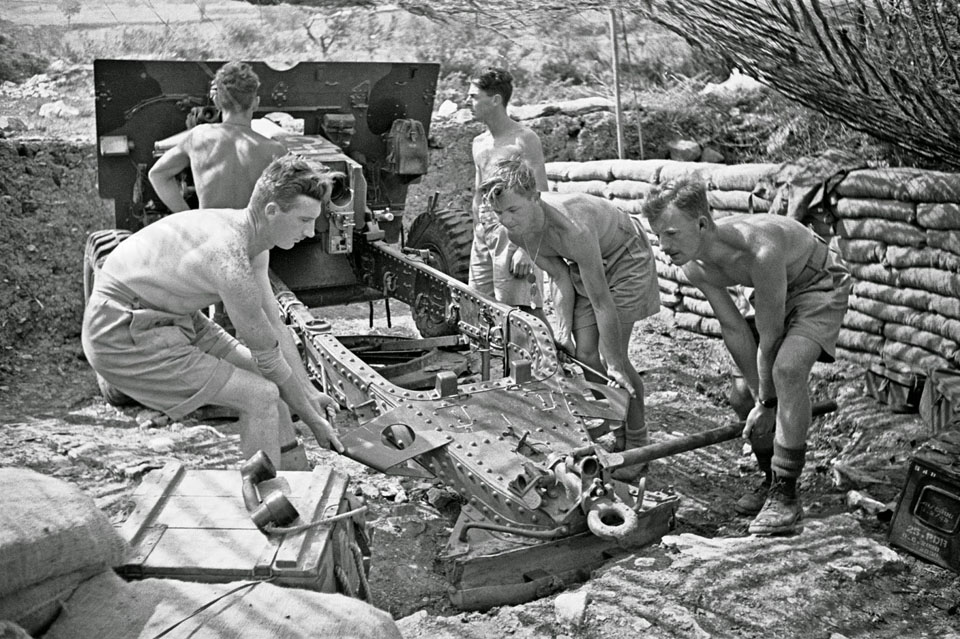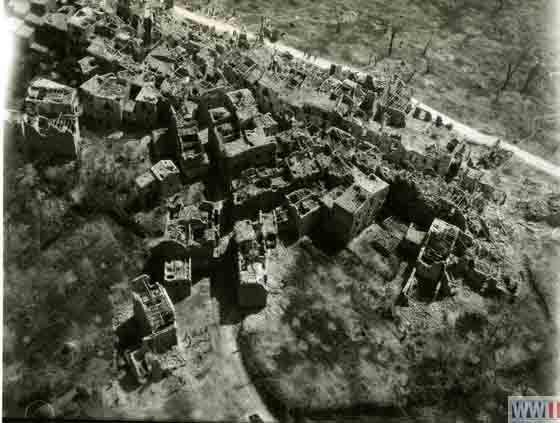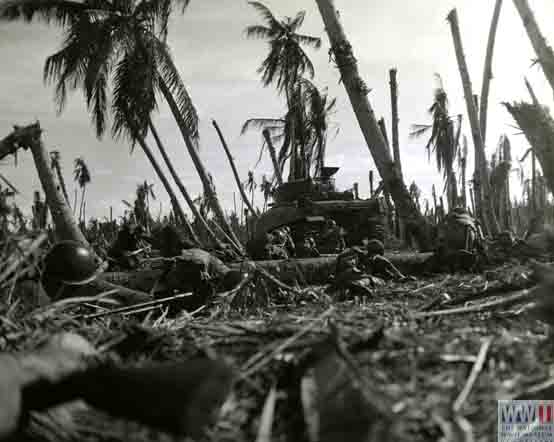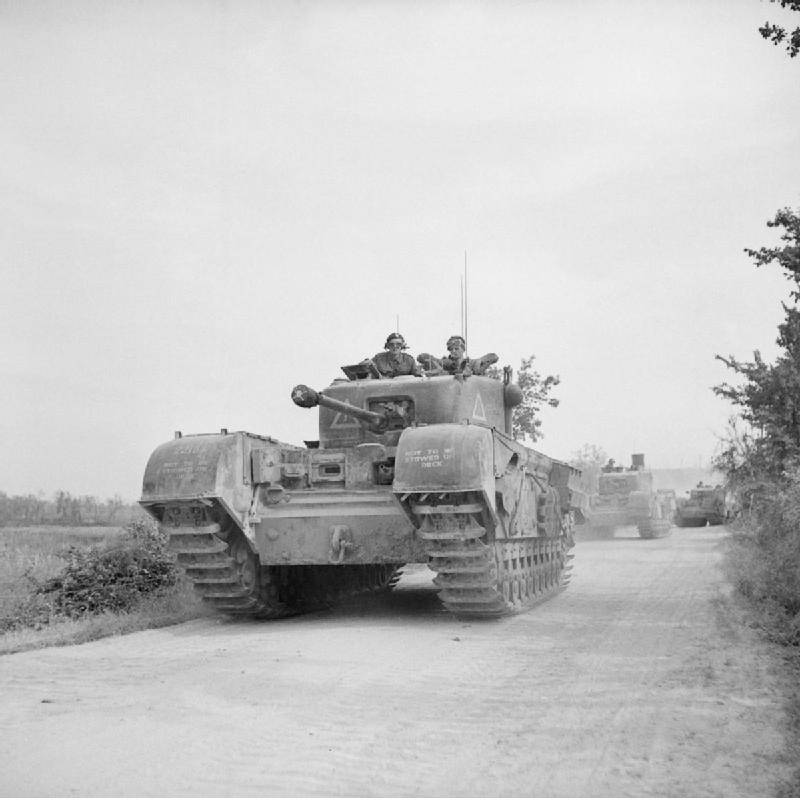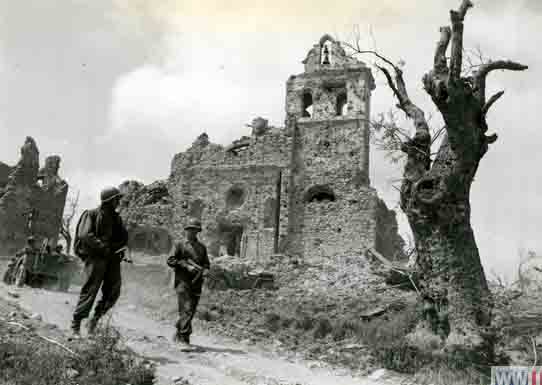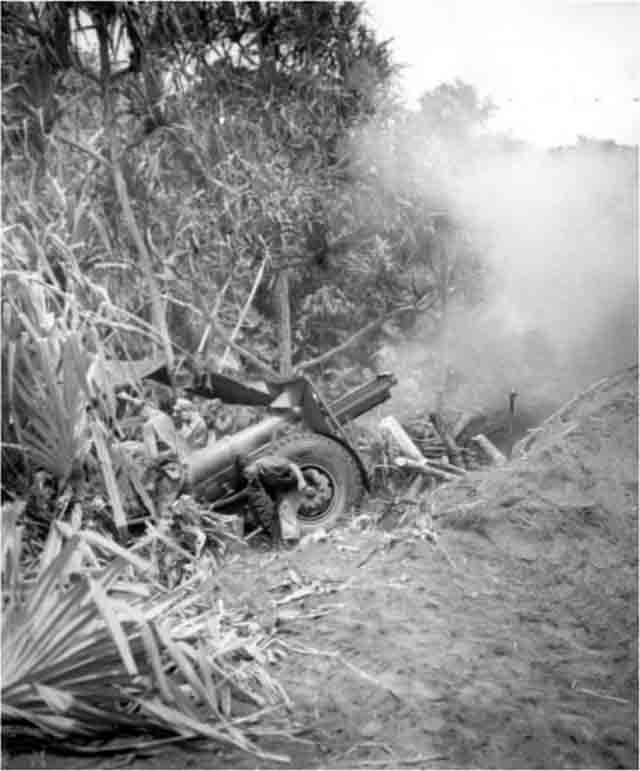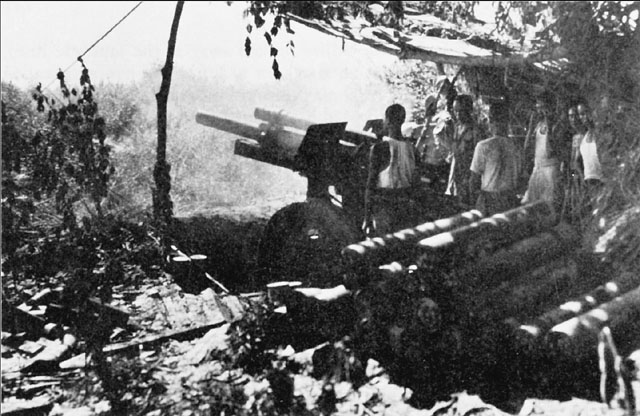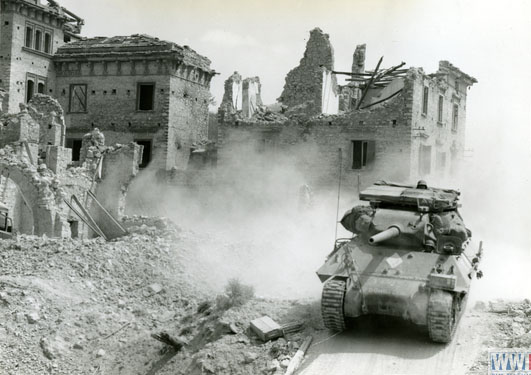Air Operations, CBI
BURMA- 18 10th Air Force B-25s attack oil facilities at Chauk.
- More than 20 A-31s attack Japanese Army positions at Buthidaung and near Labawa.
- 20 459th Fighter Squadron P-38s attack the Kangaung airfield at Meiktila.
- B-25s and fighter-bombers mount more than 90 sorties against targets in the Mogaung Valley, including missions supporting Allied ground forces at Myitkyina.
- 80th Fighter Group P-40s down 3 Ki-43 'Oscar' fighters over Kamaing at 0845 hours.
- 7 341st Medium Bomb Group B-25s and 13 14th Air Force P-40s attack Japanese Army ground troops and motor vehicles near Shasi and attack a barracks at Shayang.
- P-40s support Chinese Army ground forces in the Mamien Pass and attack Japanese Army positions at Tatangtzu and Luchiangpa, a pack train near Tengchung, and a bridge and motor vehicles at Shweli.
- 23rd Fighter Group P-40s engage in an afternoon melee near Hengyang in which no Japanese airplanes are brought down.
- More than 20 10th Air Force A-31s attack the Bishenpur and Moirang areas.
Air Operations, Central Pacific
VII Bomber Command B-24s attack Wake Island.
[Air Operations, East Indies
- Carrier aircraft from the British Far Eastern Fleetís Task Force 66 (HMS Illustrious) and the USS Saratoga (Fleet Carrier Air Group 12) attack the naval base at Soerabaja (Java) and a nearby aviation fuel refinery. One VT-12 TBM is lost with its crew.
- A VF-12 F6F downs a G4M 'Betty' bomber and a VB-12 SBD downs a transport plane, both near Soerabaja at 0740 hours.
- During the night, 7 380th Heavy Bomb Group B-24s attack the naval base at Soerabaja, Java.
Air Operations, Europe
US 12th AIR FORCEITALY:
- 12th Air Force B-25s attack the Viterbo Airdrome.
- 12th Air Force B-26s attack road bridges directly behind the battle area.
- XII TAC A-20s attack a German Army command post at Valmontone and drop supplies to Free French Army troops.
- XII TAC fighter-bombers attack gun emplaceents at Cassino and elsewhere, and numerous bridges and road and rail targets throughout the battle area.
ITALY:
- 15th Air Force heavy bombers attack the port facilities at Piombino and San Stefano al Mare, a marshalling yard at Ancona, a causeway at Orbetello, and a steel factory.
- 15th Air Force P-38s attack the Forli, Ghedi, Modena, Reggio Emilia, and Villafranca di Verona Airdromes.
- 15th Air Force heavy bombers attack Bihac.
Air Operations, New Guinea
- Supported by 6 XIII Bomber Command B-24s, 38 V Bomber Command B-25s, and 15 V Fighter Command P-40s, US Army ground forces land at Arara, New Guinea, on the mainland directly opposite the Wakde Islands. Throughout the day, flights of 3rd Light Bomb Group A-20s orbit the landing area and provide close support as needed.
- 99 V Bomber Command and XIII Bomber Command B-24s attack the Mokmer and Sorido airfields on Biak and Bosnik on Biak Island.
- V Bomber Command B-24s and B-25s attack targets around Sarmi, Sawar, and the mouth of the Orai River.
- V Fighter Command P-38s attack supply dumps and airfields on Noemfoor Island.
- B-24s, B-25s, A-20s, and fighter-bombers mount more than 120 sorties throughout the day against numerous targets between Hansa Bay and Wewak.
- 475th Fighter Group P-38s down 3 Ki-43 'Oscar' fighters over Noemfoor Island at 1210 hours.
Air Operations, Pacific
During the night B-24 Liberator bombers carry on the attack from bases in the Southwest Pacific, devastating the base depots at Surabaya, Java.
[Allied Planning
Gen Eisenhower, commander of SHAEF, sets the date of the invasion of Europe for June 5 based on tidal and light conditions necessary for the landings. On this date the tides are low enough to expose beach obstacles and there is enough light for visual aerial and naval bombardment of German defenses.
The naval forces available to support NEPTUNE under command of Sir Bertram H. Ramsay are divided into a Western Task Force and an Eastern Task Force. The Western Task Force, under Rear-Adm A. G. Kirk, is subdivided into assault forces U (Utah Beach) and O (Omaha Beach). The assault forces, preceded by minesweeping flotillas and naval gunfire, will make the initial landings at 0630 hours. The navy is to provide five artificial anchorages (codenamed Gooseberries), two of which will be developed into artificial harbors (codenamed Mulberries) after the beachheade have been established.
The NEPTUNE ground plan calls for Gen Omar N. Bradley's 1st Army composed of the VII Corps under Maj-Gen J. Lawton Collins and V Corps commanded by Maj-Gen Leonard T. Gerow, to make the landings to establish a beachhead. On D-day, the VII Corps (4th, 90th, and 9th Infantry Divisions) is to land on the beach codenamed Utah, supported by the landings of the 82nd and 101st Airborne Divisions behind the enemy's beach defenses. The VII Corps is expected to cut off the Cotentin Peninsula and capture the port city of Cherbourg in eight days (D+8). The V Corps (1st 29th, and 2nd Infantry Divisions) is to land on the beach codenamed Omaha and capture the city Fo St-Lô in nine days (D+9). By D+20, the two corps will close the gap between the forces and drive forward to Avranches. Lt-Gen George S. Patton, Jr's 3rd Army will be landed and under the oprational control of Bradley's 1st Army until D+30, when the 3rd Army will be dispatched to clear the Brittany Peninsula and capture the coastal ports while the 1st Army attacks south and east toward the Loire River. By D+90, Allied forces are to be ready to capture Paris and then advance on a broad front, with the main effort in the north under Gen Bernard L. Montgomery's 21st Army Group.
To support NEPTUNE, the navy will provide 7 battlehips, 32 cruisers, over 100 destroyers, and nearly 100 minesweepers. In total, the Allies will employ 1,213 warships of all types. The landings will employ 229 LSTs and 3,372 landing craft.
[Atlantic
32 German MTBs lay mines off the English south and east coasts and fight inconclusive engagements with both British patrols and a German convoy.
[Britain, Home Front
Kathleen Ferrier takes part in a performance of Handel's 'Messiah' at Westminster Abbey.
[Burma
The Chinese and American forces take Myitkyina airfield in a surprise attack. A battalion of Merrill's Marauders occupies the village of Pamati, a crossing-place on the Irrawaddy River. A number of Chinese units are sent by air from Ledo, in India, to take part in the attack on Myitkyina town.
[CBI
The H Force of the Marauders conducts an attack on the Myitkyina airfield and captures it, allowing immediate reinforcement by the 679th Engineer Aviation Battalion, which flies in gy glider. Chinese and British anti-aircraft units also arrive by glider. The 1st Battalion captures the ferry at Pamati, taking advantage of a feint toward the north by 3rd Battalion, Chinese forces reach the outskirts of the city of Myitkyina.
Gen Stilwell orders two Chinese battalions to capture the town of Myitkyina. The troops end up shooting each other and disintegrate without ever encountering the enemy. The battalions are withdrawn. In the meantime, the Japanese rush reinforcements to Myitkyina. Only 1,310 Americans of the Galahad Task Force reach the objective. By June 1, the large majority of the remainder will be evacuated because of illness.
[China
Street fighting breaks out in Loyang between Chinese and Japanese forces.
[Dutch East Indies
The oil installations at Surabaya on Java are attacked by aircraft from the carriers Illustrious and Saratoga. The carriers are escorted by the battleships of Adm Sir James Somerville's Eastern Fleet, designated TF 65 for the ocasion (the carriers are TF 66). The damage inflicted is not in fact as great as the attackers believe. 1 Japanese freighter is sunk and 12 aircraft are destroyed on the ground. Of the 85 attacking planes only 1 is lost.
[Italy
Although Kesselring, commanding Army Group C, has given von Vietinghoff 3 more divisions they have been unable to halt the continued Allied progress in the Liri Valley and to the south. The US 85th Division has gotten as far as Formia, while on the right some units of the 88th Division approach Maranola and others move towards Monte Grande.
In the French sector the Algerians of the French Expeditionary Corps take Esperia, which the Germans have abandoned, but suddenly run into fierce resistance on the road that runs from Esperia toward Sant'Olivo. Some French units push on toward Monte Oro, a little north of Esperia, which overlooks the Senger Line. The French 1st Motorized Division continues its advance along the south bank of the Liri River, but is halted by fire from the enemy dug in on Monte Oro, and by mines. With the capture of Monte Faggeta by the Moroccan 4th Motorized Division, the French Expeditionary Corps controls the Itri-Pico road, the highway used by the German XIV Panzer Corps for supplies. Kesselring, fearing that communication with his rear areas may be cut, orders a withdrawal.
In the Cassino sector the divsions of the Polish II Corps take Sant'Angelo hill, north of Monte Cassino. During the night the German parachutists begin to withdraw from Monte Cassino. The many breaches in the Gustav Line by the Allied forces have made their position indefensible.[MORE]
[Mediterranean
The German submarine U-616 is sunk in the western Mediterranean through the combined efforts of the US destroyers Gleaves (DD-423), Hilary P. Jones (DD-427), Ellyson (DD-454), Hambleton (DD-455), Kodman (DD-456), Emmons (DD-457), Macomb (DD-458), Nields (DD-616) and British aircraft.
| Class | Type VIIC |
| CO | Oberleutnant zur See Siegfried Koitschka |
| Location | Mediterranean, E of Cartagena |
| Cause | Depth charge |
| Casualties | None |
| Survivors | 53 |
New Guinea
Task Force TORNADO begins the preliminary phases of the operations against Wadke Island, landing the 163rd Infantry near Arare without opposition, on the coast of Dutch New Guinea, opposite the island. The landing has been preceded by a powerful naval bombardment. Adms Victor Crutchley and Russell lead the cruisers and destroyers which give cover. Following a technique already tried out on many occasions, guns have been landed and carry out a systematic hammering of the main objectives. The landed troops extend theif flank westward to the Tor River and eastward to Tementoe Creek. Other units occupy the islet of Insumanai, not manned by the Japanese.
[Occupied France
The Resistance attack the CAM ball-bearing factory at Ivry-sur-Seine.
[Pacific
The US submarines Sand Lance (SS-381) and Tunny (SS-282) attack a Japanese convoy of four transports carrying Japanese soldiers for service at Yap and Palau, and their three escorts. Sand Lance torpedoes and sinks the transport Taikoku Maru (2633t) about 60 miles west of Saipan; Tunny torpedoes and sinks the army cargo ship Nichiwa Maru (4955t) west of the Marianas. Sand Lance then torpedoes the army cargo ship Fukko Maru (3834t) when she stops to pick up survivors from Nichiwa Maru. Both submarines survive enemy depth-chargings.
[Images from May 17, 1944
|
|
|
|
|
|
|
|
|
|
|
|
Panzer Crew in Romania |
 |


